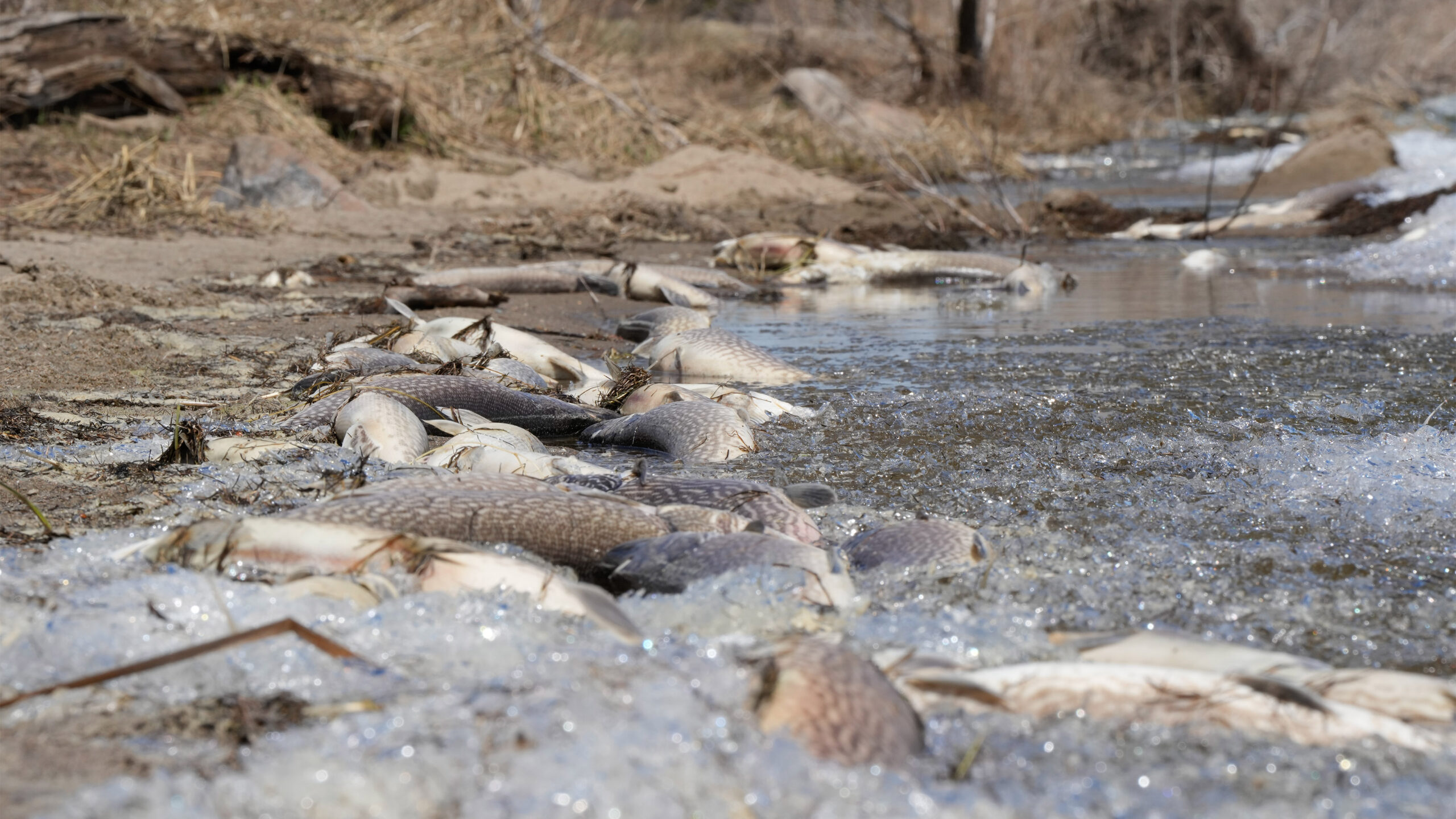ND Outdoors
Doug Leier | Outreach Biologist
Remember last fall? For most of us it was filled with sunshine, warmth and appreciation. When November deer season opened, the extended autumn continued with many areas of the state enjoying temperatures around 45 degrees, and 50 was common. Then just before Thanksgiving the change of sun and warmth was replaced by the snow and cold. The abrupt turn we’re seldom surprised by, but often disappointed when it happens, was a reality check.
I saw my first hard-water angler on Nov. 26 in east-central North Dakota. The proud angler posing with a pike from a tip up. While I was safe and sound on solid ground when I asked how thick the ice was, the “2 inches … come on out” report was enough warning to keep me from verifying it personally. It’s a good reminder no matter the month, never assume ice is safe. Check, verify, double check. Like cutting a board – measure twice, cut once. Once you cut, there’s no going back and once the ice cracks, it’s too late.
Living in North Dakota, a winter that begins in November can set the table for winterkill. A situation when water no longer contains enough dissolved oxygen for fish to survive. Without oxygen, fish suffocate, just as they do when you take them out of water.
Aquatic vegetation produces dissolved oxygen through the respiration process of photosynthesis, just as land-based plants release oxygen into the air. Fish then process oxygen with their gills.
Of course, sunlight is needed to start the photosynthesis process, and during some winters the combination of thick ice and snow on top prevents sunlight from reaching aquatic plants. At some point, lack of sunlight kills aquatic plants, so they no longer release oxygen into the water.
To compound matters, once the plants begin to die-off, not only do they no longer produce oxygen, they take oxygen out of the water as they decompose. If the water’s oxygen content falls low enough, fish start to die. And when that happens, their decomposition also uses oxygen.
The reality of winterkill
Winterkill has been a limiting factor on some North Dakota waters for decades.
It’s a word that draws winces of pain from anglers who were banking on another year of successful fishing in a lake that maybe wasn’t big enough, deep enough, or didn’t have the right aquatic habitat to sustain fish through a winter that produces thick ice and heavy snow.
Lakes that suffer a die-off can be restocked and once again become productive fishing waters. But every so often, the right combination of circumstances come together to threaten that fishery. It should be noted that some lakes are more prone to winterkill than others. This is usually due to shallow waters and excessive nutrients.
The limiting factor is that the North Dakota Game and Fish Department manages some 425-plus fishable water bodies. At the start of each winter, it’s impossible to tell which ones, if any, will succumb to low dissolved oxygen.
Another method for battling winterkill potential is to clear the ice of snow. While this sounds good, it’s much easier said than done. One look outside and I realize it’s hard enough to my keep my driveway clear of snow, let alone enough acres of ice to make a difference for even one lake where winterkill is looming. It’s easy to imagine that hours after clearing part of a lake, winds would quickly blow snow into the open space.
Playing the hand we’re dealt
Winterkill is a factor of nature and predicting it is not an exact science.
Biologists monitor dissolved oxygen content in suspect lakes during most winters. Once winterkill is suspected, all biologists can do is go in with nets once the ice goes out and see what’s left. Long-term solutions preventing winterkill from occurring lie with best management practices within the lake’s watershed.
So, while driving by a picturesque winter scene of snow and ice reflecting the bright sun, consider the fish below. On most lakes, they’re just fine and starting to gear up for the spring spawn and production of a new generation. On a few, however, the beautiful winter scene above the ice may belie the R-rated natural event taking place below.


